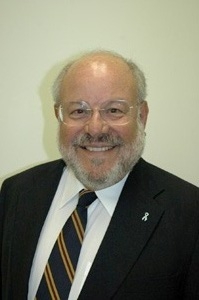The worst U.S. accident involving the use of nuclear power in space came in 1964 when the U.S. satellite Transit 5BN-3, powered by a SNAP-9A plutonium-fueled radioisotope thermoelectric generator, failed to achieve orbit and fell from the sky, disintegrating as it burned up in the atmosphere, globally spreading plutonium -- considered the deadliest of all radioactive substances. That accident was long linked to a spike in global lung cancer rates where the plutonium was spread, by Dr. John Gofman, an M.D. and Ph. D., a professor of medical physics at the University of California at Berkeley. He also had been involved in developing some of the first methods for isolating plutonium for the Manhattan Project.
NASA, after the SNAP-9A (SNAP for Systems Nuclear Auxiliary Power) accident became a pioneer in developing solar photovoltaic power. All U.S. satellites now are energized by solar power, as is the International Space Station.
The worst accident involving nuclear power in space in the Soviet/Russian space program occurred in 1978 when the Cosmos 954 satellite with a nuclear reactor aboard fell from orbit and spread radioactive debris over a 373-mile swath from Great Slave Lake to Baker Lake in Canada. There were 110 pounds of highly-enriched (nearly 90 percent) of uranium fuel on Cosmos 954.
Highly-enriched uranium -- 90 percent is atomic bomb-grade --would be used in one reactor design proposed in the NAS report. And thus there is a passage about it under "Proliferation and security." It states that "HEU [highly enriched uranium] fuel, by virtue of the ease with which it could be diverted to the production of nuclear weapons, is a higher value target than HALEU [high assay low enriched uranium], especially during launch and reentry accidents away from the launch site. As a result, HEU is viewed by nonproliferation experts as requiring more security considerations. In addition, if the United States uses HEU for space reactors, it could become more difficult to convince other countries to reduce their use of HEU in civilian applications."
As for rocket propulsion in the vacuum of space, it doesn't take much conventional chemical propulsion to move a spacecraft -- and fast.
And there was a comprehensive story in New Scientist magazine this past October on "The new age of sail," as it was headlined. The subhead: "We are on the cusp of a new type of space travel that can take us to places no rocket could ever visit."
The article began by relating 17th Century astronomer Johanne Kepler observing comets and seeing "that their tails always pointed away from the sun, no matter which direction they were traveling. To Kepler, it meant only one thing: the comet tails were being blown from the sun."
Indeed, "the sun produces a wind in space" and "it can be harnessed," said the piece. "First, there are particles of light streaming from the sun constantly, each carrying a tiny bit of momentum. Second, there is a flow of charged particles, mostly protons and electrons, also moving outwards from the sun. We call the charged particles the solar wind, but both streams are blowing a gale"that's in the vacuum of space.
Japan launched its Ikaros spacecraft in 2010sailing in space using the energy from the sun. The LightSail 2 mission of The Planetary Society was launched in 2019and it's still up in space, flying with the sun's energy.
New systems using solar power are being developed - past the current use of thin film such as Mylar for solar sails.
The New Scientist article spoke of scientists "who want to use these new techniques to set a course for worlds currently far beyond our reach -- namely the planets orbiting our nearest star, Alpha Centauri."
The NAS committee, however, was mainly interested in a choice between a "nuclear thermal propulsion" (NTP) or "nuclear electric propulsion" (NEP) for rocket propulsion.
The NAS report states: "Although NEP and NTP systems both use nuclear power, they convert this power into thrust in different ways based on difficult technologies."
As the report explains NEP systems, they "convert heat from the fission reactor to electrical power, much like nuclear power plants on Earth. This electrical power is then used to produce thrust through the acceleration of an ionized propellant." As for an NTP system, it "is conceptually similar to a chemical propulsion system, where the combustion chamber has been replaced by a nuclear reactor to heat the propellant."
"Advanced nuclear propulsion systems (along or in combination with chemical propulsion systems) have the potential to substantially reduce trip time" to Mars "compared to fully non-nuclear approaches," says the report.
(Note: You can view every article as one long page if you sign up as an Advocate Member, or higher).





